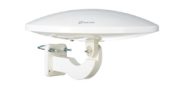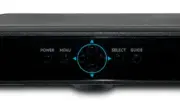There’s one thing I’ve been taught over and over again. Heat kills electronics. It lowers the life of batteries, causes components to fail, and can cause some spectacular failures. And, heat is everywhere. Most electronic devices would actually be happier if they were kept at temperatures around 65 Fahrenheit, rather than in pockets, on desks, or in warm rooms. Gamers know that if they want serious performance, they need serious cooling. But do you?
Back in the early days of laptops, it was popular to buy something called a “chill mat” or “chill pad.” This was something that sat below the laptop, often powered by the USB port, and gave extra cooling through the use of fans. They also added noise and bulk. While you don’t see them in use anymore, you can still buy them on a lot of e-commerce sites.
Extra cooling for everything?
Practically everything you use today is a computer by the basic definition. Your phone, your watch, even your microwave and washing machine. If you were to go by the basic 1970s definition of “computer,” you probably have a good fifty of them in your home. And each one could be done in by heat.
It’s been suggested that chill mats would be good for satellite equipment, for smart devices, literally for everything that you want to keep cool. But, before you go ahead and buy a dozen of them and start strategically placing them, there are a few facts to consider.
What you really need is airflow
Chill mats became popular because a lot of laptops weren’t designed for the airflow they needed. Despite having “lap” in the name, most weren’t really tested with actual people. They worked fine on a desk but when you actually put one on your lap, they got hot FAST. They were uncomfortable to use. Not only that, but often times the airflow was blocked because your lap isn’t a completely flat surface (obviously.) That’s why chill mats were invented.
Before putting a lot of extra cooling devices in place, start by looking to see that your devices have the airflow they need. I never recommend putting satellite equipment, or any other consumer equipment, in drawers or closed cabinets. These devices need fresh air, and it’s the lack of it that will make them fail. Circulating the hot air around them without letting in fresh air isn’t going to help them. Avoid any sort of enclosure that gives a device less air than it would get without the enclosure. Simple as that.
Things are generally built better now than they were
You can still find cases online where something will start to burn or even explode because of poor cooling. More often than not it’s the battery that becomes overheated. As it does, it begins to swell and if it’s in a hard case (as it will be in your phone), well something has to give.
These are rare cases. Really rare. I’m not saying they don’t happen. I’m saying that you generally don’t need to worry about them. Why? Because today’s devices will shut off rather than getting so hot that they get damaged. This wasn’t the case with early laptops. However, anyone who has left their phone in the car or in direct sunlight knows that it will turn itself off before it gets too hot. The same is true for everything, even that satellite equipment you put in an enclosure without enough ventilation.
It may be inconvenient to lose use of something for a little while, but at least it won’t start a fire. That’s the important thing.
Bottom line
Bottom line, I don’t think you’re going to need to go shopping for chill mats. Yes there are going to be cases where they’re needed but they’re rare. In the end, chill mats were just as much about keeping your lap cool as they were about keeping your laptop cool. They probably don’t need to be part of your plans today.
Speaking of plans, though, if your plans call for upgrading your home entertainment experience, call the folks at Solid Signal! We can help and we actually answer the phone. The number is 888-233-7563 and we’re here during East Coast business hours. If it’s after hours, fill out the form below. We’ll get back to you, usually within one business day.





